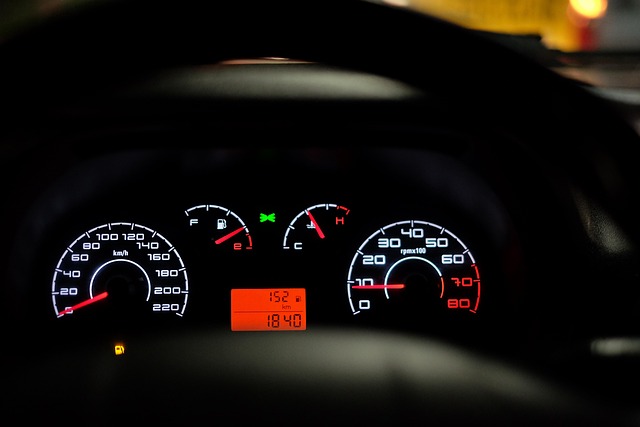Register Your Car: Step-by-Step with DMV VIN Verifier
Looking to register your car in California? This comprehensive guide walks you through the entire process, from understanding key requirements to securing your plate. We’ll break down what documents y…….

Looking to register your car in California? This comprehensive guide walks you through the entire process, from understanding key requirements to securing your plate. We’ll break down what documents you need, how to visit your local DMV, verify your Vehicle Identification Number (VIN) accuracy, and pay registration fees. Armed with these steps and a reliable dmv vin verifier, you’ll be on your way to seamless car registration in California.
- Understand California Car Registration Requirements
- Gather Necessary Documents for Car Registration
- Visit Your Local DMV and Complete Application
- Verify Vehicle Identification Number (VIN) Accuracy
- Pay Car Registration Fees and Receive Your Plate
Understand California Car Registration Requirements

Before registering your car in California, it’s crucial to understand the state’s specific requirements. The California Department of Motor Vehicles (DMV) mandates that all vehicles operating within the state must be properly registered and have a current registration certificate. One essential aspect is ensuring your vehicle’s unique Vehicle Identification Number (VIN) is accurately verified. Utilize a trusted dmv vin verifier to check the VIN’s authenticity, which can prevent potential issues down the line.
Additionally, for peace of mind, consider undergoing a vin inspection. This process involves a thorough examination of your car’s history and documentation. You can even opt for a mobile vin inspection service, which provides convenience by coming to your location to complete the verification process. Ensure all paperwork is in order and meet the DMV’s criteria to avoid delays during registration.
Gather Necessary Documents for Car Registration

Before you begin the car registration process in California, it’s crucial to gather all the essential documents. The first step is to obtain a Vehicle Identification Number (VIN) verification from a trusted source. You can opt for a mobile VIN verification or use a professional vin verifier to ensure the accuracy of your vehicle’s details. This involves checking the VIN against state records to confirm ownership and prevent fraud.
Once you have confirmed the VIN, collect other necessary paperwork such as proof of insurance, a valid driver’s license, and the title (or proof of lien if applicable). These documents are required by the California Department of Motor Vehicles (DMV) for a smooth registration process. A proper vin inspection ensures that all information associated with your vehicle is legitimate, protecting you from potential legal issues down the line.
Visit Your Local DMV and Complete Application

To start the registration process, visit your local California DMV office. You’ll need to complete an application for vehicle registration, which is typically done at a designated counter. An essential step in this process involves verifying the Vehicle Identification Number (VIN). The DMV offers several methods for VIN verification, including mobile vin inspection and online tools. It’s crucial to ensure the VIN is accurate and matches the make, model, and year of your car to avoid any registration issues later on.
During your visit, bring all necessary documents, such as proof of ownership, insurance, and identification. The DMV staff will guide you through the application process, which includes providing personal information and paying the registration fees. Remember, having accurate VIN data through a reliable vin inspection service can streamline this process significantly.
Verify Vehicle Identification Number (VIN) Accuracy

Before registering your car in California, it’s crucial to ensure the Vehicle Identification Number (VIN) is accurate. A correct VIN is essential for a successful registration process and ensures that the vehicle is safe and legal on California’s roads. Many people opt for a dmv vin verifier or use online tools for this initial check, as it’s the first step in navigating the complex car registration process.
A vin inspection, whether done through a mobile vin inspection service or at a DMV office, verifies that the VIN on the vehicle matches the one reported on the title and other official documents. This simple yet critical step can save you time and potential headaches down the line, ensuring your car’s registration goes smoothly.
Pay Car Registration Fees and Receive Your Plate

After submitting your application and required documents to the DMV, the next step is to pay the car registration fees. These fees vary based on vehicle type, weight, and emissions standards. You can typically pay online or in person at a local DMV office. Once your payment is processed, the DMV will issue your vehicle’s license plate.
Before receiving your plates, you may be required to undergo a mobile vin inspection or have a vin inspection done by an authorized agent to verify your vehicle’s identity using its unique VIN (Vehicle Identification Number). This process ensures that your car meets all necessary safety and environmental standards before it can be legally registered and driven on California roads.
Registering a car in California is a straightforward process once you understand the requirements and gather the necessary documents. By visiting your local DMV, completing the application, verifying your Vehicle Identification Number (VIN) with a dmv vin verifier, and paying the registration fees, you’ll be on your way to becoming a legal California driver in no time. Remember to keep your paperwork up-to-date for smooth future interactions with the DMV.







